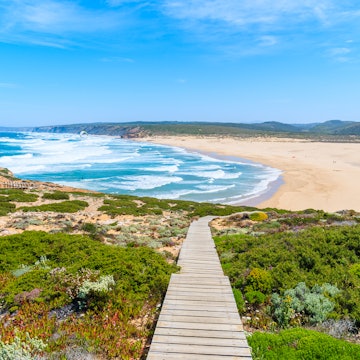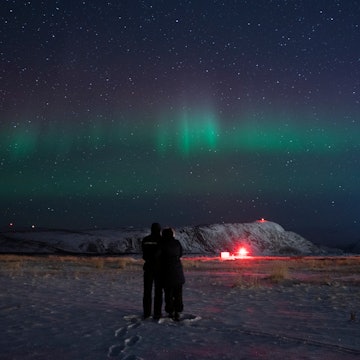
At the risk of starting on a bummer note, it's my sad duty to confirm that the age of groundbreaking, Earth-bound adventure is effectively over. Even virtually unknown destinations are now just a search away on Google, and they probably have an active Instagram feed. The only round-the-world challenge left involves travelling on a pogo stick - backwards. Someone, somewhere has already trodden the most remote nooks, crannies and mountaintops; and those places also have decent wi-fi.
But take heart, adventurer: the beautiful thing about travel isn't that you're the first or best or even the worst; it's the personal discovery, growth and fulfilment you glean on the way. You may be the 119,837,857th person to lay eyes on Pompeii, but what counts is how this experience affects and shapes you as an individual.
What follows is a small selection of history's bravest, most determined, craziest adventurers. You'll probably never be as interesting as them, but that doesn't mean you can't ape their adventures and make them - in some sense - your own.
Erik the Red/Leif Ericson
Noteworthy adventures: Settled Greenland and (briefly) North America.
Back when a lot of people still suspected that sailing off into the unknown might end with them dropping off the edge of a flat Earth or blundering into a dragon's lair, it must have taken nerves of steel for this Norwegian father/son duo to blaze a trail to Greenland and North America.
That said, Erik the Red had little choice but to flee Iceland and become the first European settler on Greenland in 986 AD because of the murderous fallout of his bad temper. Travel/exploration as a result of banishment ran in the family – Erik's father washed up in Iceland after being invited to leave Norway for similar reasons.
Leif Ericson, who broke with tradition by murdering no one, pushed further west to find 'Vinland' (known today as Newfoundland), which another merchant sailor had reported sighting after being blown off course. Leif reached land and helped establish settlements around 1000 AD, which were used as a base for shipping timber back to Greenland. For a variety of reasons, all the settlements were abandoned after only a few years.
Emulate them: Whether or not you've been banished from your home country, journeying through Newfoundland and Greenland can be an otherworldly, enriching experience even today.
Ferdinand Magellan
Noteworthy adventures: Organized the first circumnavigation of Earth.
While acting on a disastrous hunch about a shorter, westerly route from Europe to the Spice Islands in Indonesia, Portuguese-born Magellan inadvertently organized the first circumnavigation of the Earth. He doesn't get much credit, though. This is because he and most of his crew didn't complete the journey thanks to mutiny - and associated punitive executions - abandonment, wars, disease, and starvation.
The journey was eventually completed by forgiven mutineer Juan Sebastián Elcano after Magellan was killed in the Philippines. Of the five ships and 270 men that set off from Seville in August of 1519, only one beat-up, spice-laden ship carrying just 18 men from the original crew limped back to Spain in September 1522. Other abandoned stragglers eventually made their way home, bringing the survivor count to roughly 38.
Though he didn't get the fame, fortune and shortcut to the Spice Islands that he envisioned, Magellan's mission greatly expanded Europe's knowledge of the world, including the accidental discovery of the Pacific Ocean, and revealed how the planet was quite a bit larger than anyone had previously suspected. Also, though it had long been suggested that the Earth was probably not flat, this misadventure was the first empirical proof of a spherical world.
Emulate him: A round-the-world sailing trip is never dull or ordinary. And if the potential for mutiny, abandonment, wars, disease, and starvation fits your idea of adventure travel, you can always book a couple of flights on a budget airline.
Ibn Battuta
Noteworthy adventures: Clocked up an impressive 73,000 miles during the 14th century.
While most of the people listed here traveled with a pretty specific goal in mind, Ibn Battuta just had the urge to wander. And boy did he do that.
A Berber from Morocco, Battuta originally left home to undertake a meandering pilgrimage to Mecca. From there, he just kept on going. Over nearly 30 years (1325-1354) he traveled some 73,000 miles, visiting Cairo, Mogadishu, the Arabian Peninsula, Iraq, Constantinople, Bulgaria, Central Asia, India, Sri Lanka, the Maldives, Indonesia, Vietnam, Beijing, Sardinia, Spain, Timbuktu and then back home without, obviously, the help of any motorized transport. He stopped frequently to work, rub shoulders with the rich, famous and powerful of the era, marry a few no doubt long-suffering ladies, stumble into various adventures/trouble and recover from what must have been some truly horrific bouts of traveler's diarrhea.
Accounts of Battuta's travels - dictated from memory as he didn't keep a journal - were later published in the Rihla ('The Journey').
Emulate him: Overland, self-powered travel is a small but inherently badass niche. Even short trips can be fulfilling and inspire awe from friends and bystanders.
Nellie Bly
Noteworthy adventures: First 'almost unchaperoned' round-the-world trip by a woman.
At the age of 25, celebrated journalist Elizabeth Jane Cochrane, writing under the pen name Nellie Bly, set out on 14 November, 1889, to emulate Jules Verne's fictional character Phileas Fogg in Around the World in Eighty Days. She completed the (obviously) overland trip on 25 January 1890, in a world-record time of 72 days, six hours, 11 minutes and 14 seconds. (Her record was broken by some killjoy man just a few months later.) Bly traveled 'with nothing but the dress on her back, a heavy coat, a few pairs of underwear, and a small bag carrying her toiletries'.
Bly's easterly route via steamships and railways started in New Jersey, went through England, France (where she actually met Jules Verne), down to Brindisi, Italy, through the Suez Canal, Sri Lanka, Malaysia, Singapore, Hong Kong, China and Japan before landing on US soil in San Francisco and completing the trip on a chartered private train back to New Jersey.
Emulate her: Overland, round-the-world trips are infinitely more comfortable these days, but that doesn't mean they aren't ambitious and fulfilling.
Dervla Murphy
Noteworthy adventures: self-supported bike trip from Ireland to India in 1963.
Murphy started what would be decades of tireless adventure travel and writing with this pedal-powered quest, which took her through the teeth of Europe during an especially bad winter, followed by Iran, Afghanistan, and Pakistan. Armed with a near imperviousness to discomfort, a disregard for personal safety, and a .25 pistol, which was put to use fending off hungry wolves in Bulgaria and 'lecherous Kurds in Persia', she achieved her objective mostly unscathed and wrote about the adventure in the memoir Full Tilt: Ireland to India With a Bicycle.
Emulate her: Travel by bike is a surefire way to get a more intimate look at destinations and cultures.













